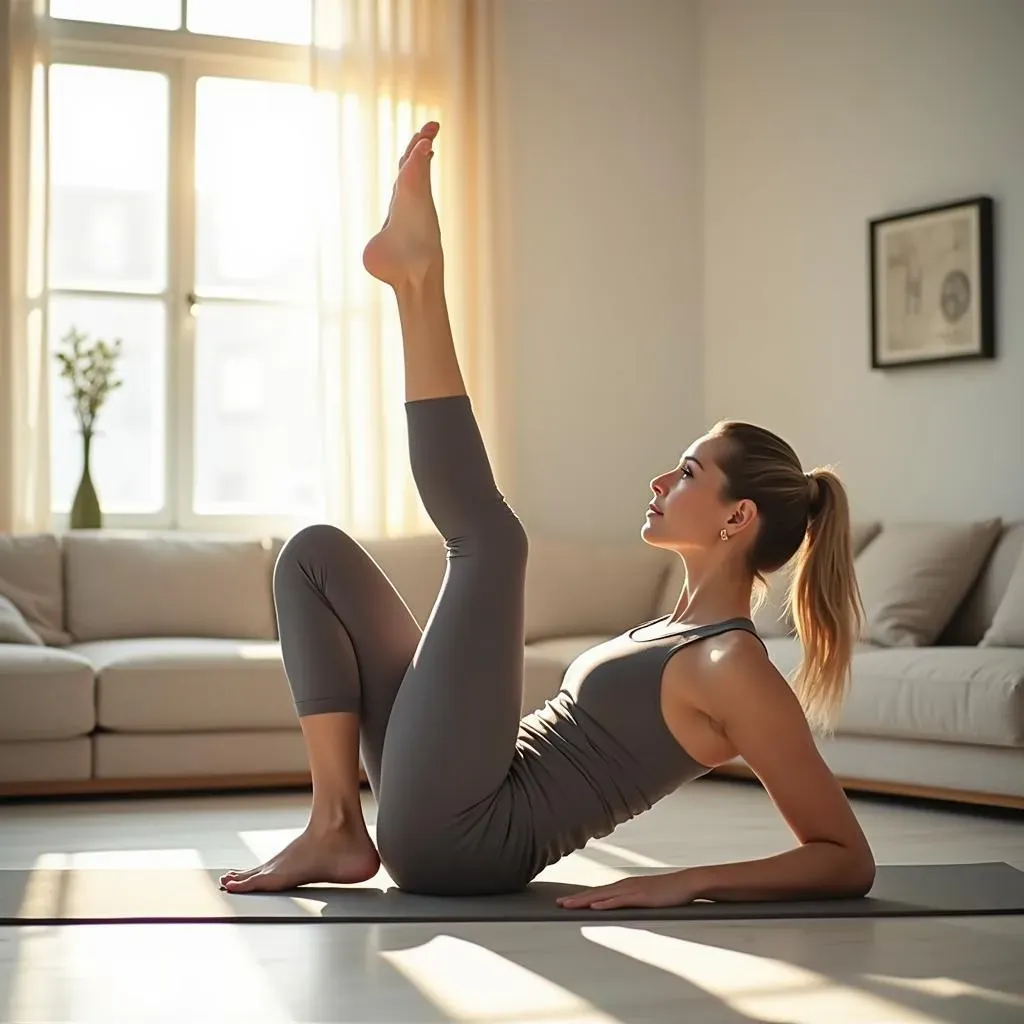Table of Contents
Feeling like you need a solid workout but the gym feels like another planet? Maybe time is tight, or you just prefer the comfort of your own space. You're not alone. Getting in shape shouldn't require a major expedition or expensive equipment. That's where an at home pilates workout steps in, offering a powerful way to build strength, improve flexibility, and nail better posture without leaving your living room.
Why Choose an At Home Pilates Workout? Benefits and Basics
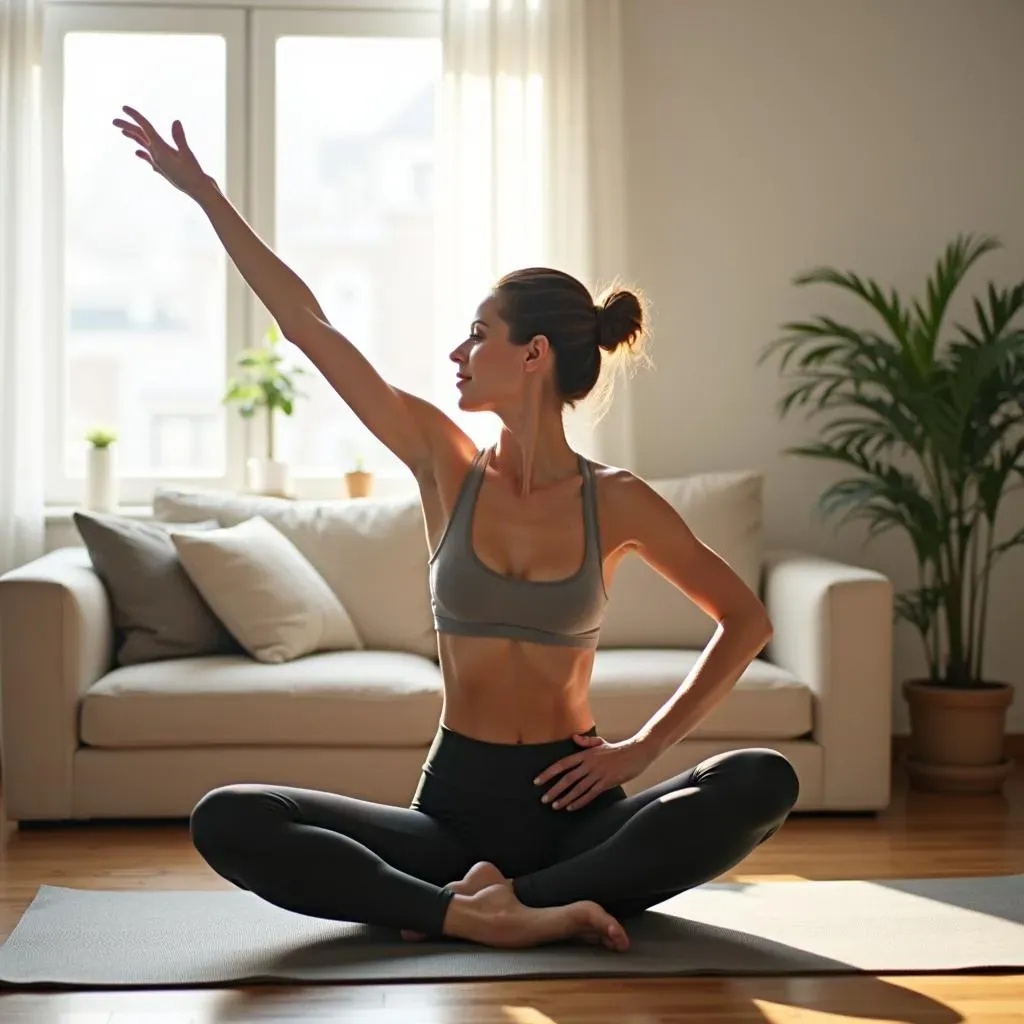
Why Choose an At Home Pilates Workout? Benefits and Basics
No Gym Required, No Excuses Left
Let's be real. Getting to a gym can be a whole thing. Traffic, parking, finding a class that fits your schedule, feeling slightly judged by someone in perfect leggings – it adds up. The beauty of an at home pilates workout is its sheer convenience. You literally roll out of bed, or off the couch, and you're there. No travel time, no waiting for equipment, just you and your mat. This accessibility makes consistency much easier to achieve, which is key to seeing results with any fitness routine, especially one as focused and deliberate as Pilates.
Think about it. Five minutes here, twenty minutes there. You can squeeze in a quick core session before breakfast or unwind with some stretches in the evening. An at home pilates workout fits into your life, not the other way around. It removes a lot of the common barriers people face when trying to stick with exercise.
Real Benefits Beyond the Mat
So, what's in it for you? An at home pilates workout delivers some serious perks. First off, it’s a powerhouse for your core. We're talking deep abdominal muscles, the ones that support your spine and power almost every movement you make. Strengthening this area can do wonders for reducing lower back pain, something many of us grapple with daily from sitting at desks or just, you know, existing.
Beyond the core, Pilates builds long, lean muscle tone and improves flexibility and balance. It's not about bulky muscles; it's about controlled strength and range of motion. Ever feel stiff or awkward? Pilates helps iron that out. It also teaches you better body awareness, helping you understand how your body moves and how to move it more efficiently. This can translate to better posture and fewer aches and pains throughout your day.
Here are some key benefits you can expect:
- Increased core strength and stability
- Improved flexibility and range of motion
- Better posture and body alignment
- Reduced back pain
- Enhanced balance and coordination
- Increased body awareness
Pilates Basics: More Than Just Mat Work
While many people picture mat exercises when they think of Pilates, the system developed by Joseph Pilates is much broader. However, for an effective at home pilates workout, a mat is really all you need to start. The core principles remain the same, whether you're on a reformer or your living room floor: centering, concentration, control, precision, breath, and flow.
Centering means focusing on your core, the "powerhouse." Concentration is about being present in each movement. Control means performing exercises with deliberate muscle engagement, not momentum. Precision is about the exactness of the movement. Breath is fundamental, using it to support and deepen your exercises. Flow connects the movements smoothly. Understanding these basics is crucial for getting the most out of your at home pilates workout, ensuring you're working smart, not just hard.
Setting Up for Your At Home Pilates Workout: Space and Simple Gear
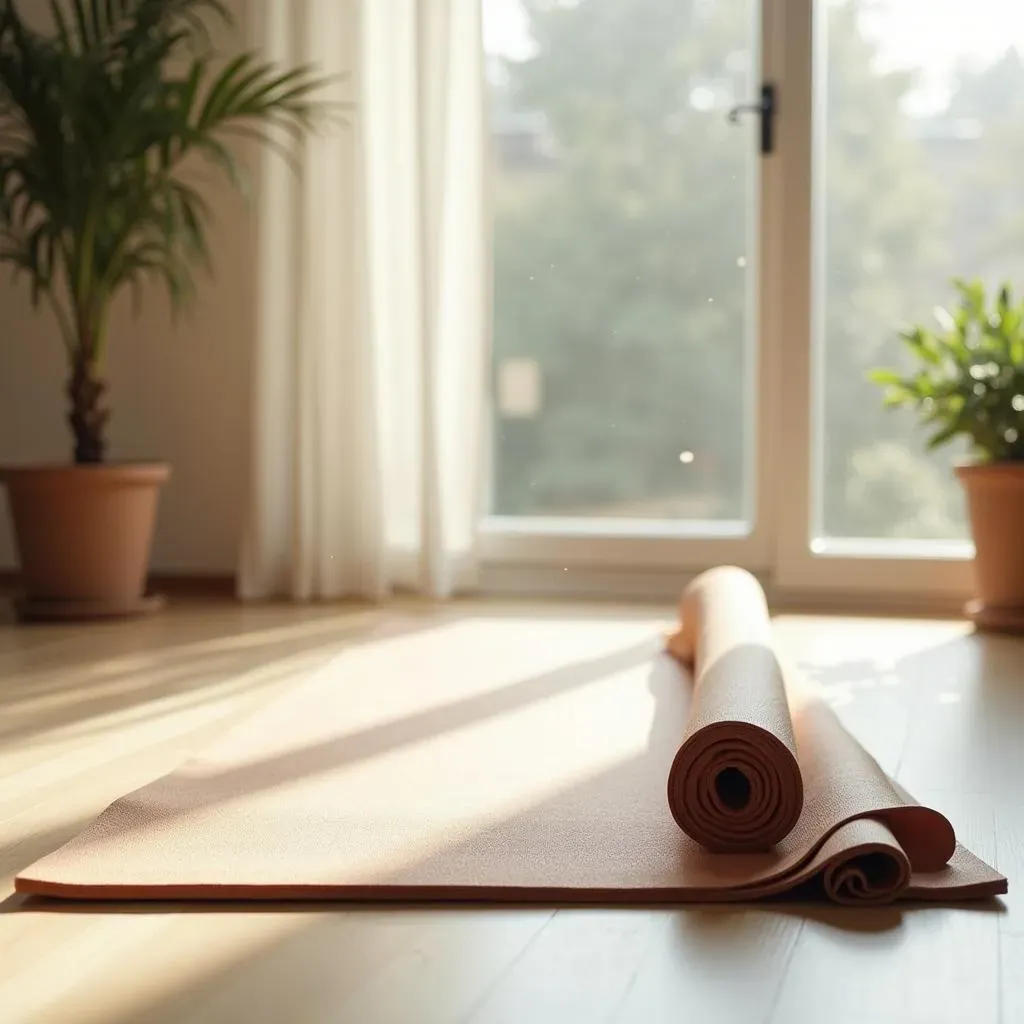
Setting Up for Your At Home Pilates Workout: Space and Simple Gear
Finding Your Pilates Sanctuary (Even if it's the Living Room Floor)
so you're sold on the idea of an at home pilates workout. Now, where do you actually *do* it? You don't need a dedicated studio with bamboo floors and soft lighting (though hey, if you have one, go for it). Most apartments and houses have enough space. Clear a patch in your living room, bedroom, or even a quiet corner of the kitchen if you're feeling ambitious. You need enough room to lie down flat and extend your arms and legs without hitting furniture or tripping over the cat. Shoving the coffee table aside usually does the trick. Make sure the surface is flat and not too hard – concrete floors aren't ideal unless you have serious padding.
The Non-Negotiable: A Decent Mat
If there's one piece of gear you absolutely need for your at home pilates workout, it's a mat. Don't skimp here. A thin yoga mat might cut it for some things, but for Pilates, where you spend a lot of time on your back, side, and knees, you want something with a bit more cushion. Look for a mat that’s at least 1/4 inch thick, preferably thicker if your joints are sensitive or your floor is particularly unforgiving. It provides padding for your spine and knees and offers grip so you're not sliding around during exercises. You can find decent ones online or at sporting goods stores without breaking the bank. A thick towel folded over a few times is a temporary fix, but a proper mat makes a world of difference.
What makes a good Pilates mat?
- Thickness (at least 1/4 inch, thicker is better)
- Good cushioning for joints
- Non-slip surface
- Durable material
- Enough length and width for your body
Optional Extras: Props and Ambiance
While a mat is the core requirement for most at home pilates workout routines, especially beginner ones, you can add props later to increase challenge or provide support. Things like resistance bands, a small Pilates ball, or even light hand weights can elevate your practice. But don't feel pressured to buy anything upfront. Master the mat exercises first. As for ambiance? Some people like quiet, some like calming music. Find what helps you focus on your body and breath. Avoid distractions – maybe tell your roommate or family you need 20 minutes uninterrupted. Silence your phone. Treat this time as your dedicated movement practice.
The Core Sequence: Essential Exercises for Your At Home Pilates Workout
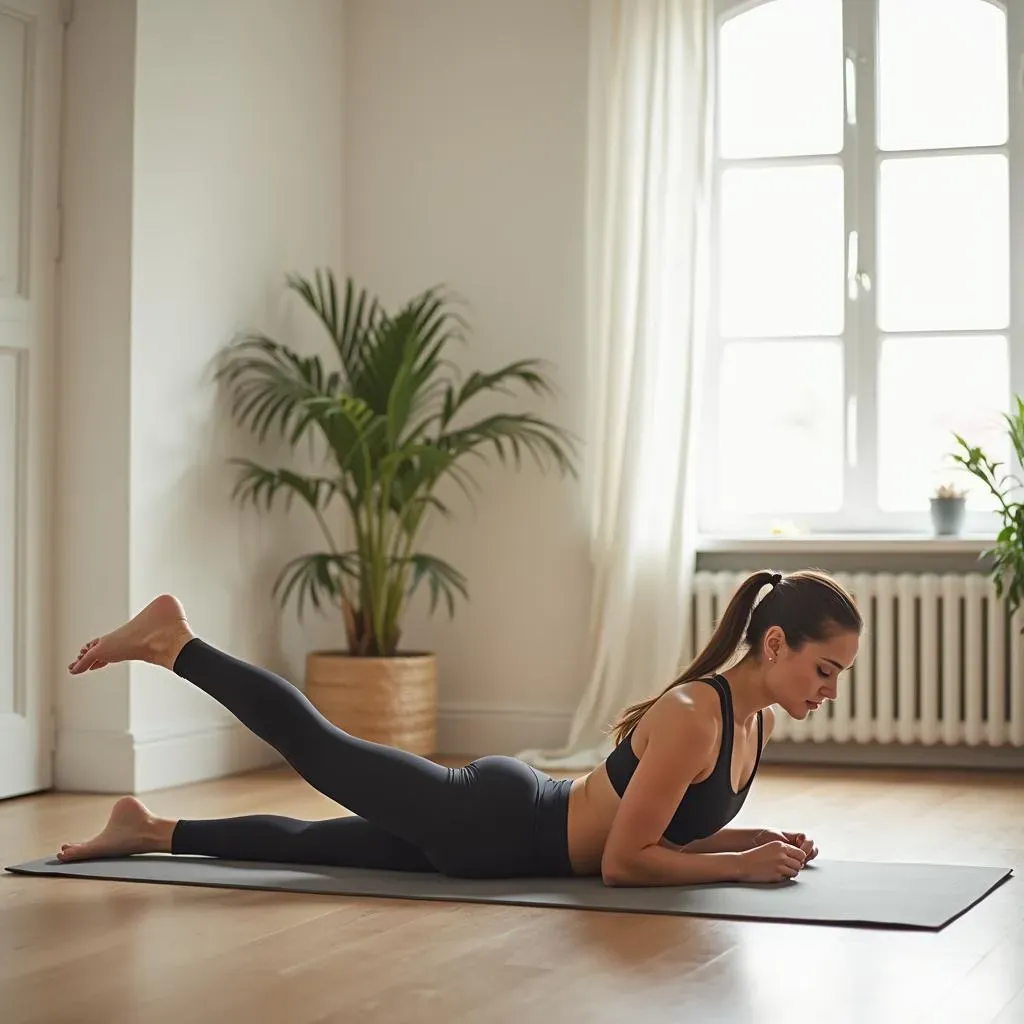
The Core Sequence: Essential Exercises for Your At Home Pilates Workout
Building Your Foundation, One Move at a Time
Alright, you've got your mat, your space is cleared (mostly), and you're ready to actually *do* this at home pilates workout thing. Where do you even start? You don't need a fancy routine with a million intricate moves right away. The genius of Pilates is in its foundational exercises. These aren't just warm-ups; they are the building blocks. Mastering them teaches you that core connection, the breath control, and the precise movements that define the practice. Think of them as your non-negotiables, the moves you return to again and again.
Starting with these fundamental exercises ensures you're engaging the right muscles and protecting your joints. It's tempting to jump to the flashy stuff you see on Instagram, but trust me, doing the basics correctly will give you way more strength and stability in the long run. An effective at home pilates workout starts with understanding how to properly activate your core, how to move your spine with control, and how to use your breath to power your movements. It’s less about how many reps you do and more about how well you do each one.
Key Pilates Principles to Remember During the Sequence:
- Centering: Focus on your core (the "powerhouse").
- Concentration: Be fully present in each movement.
- Control: Execute moves with deliberate muscle engagement.
- Precision: Pay attention to the details of form.
- Breath: Use your breath to support and deepen movements.
- Flow: Move smoothly from one exercise to the next.
Refining Your At Home Pilates Workout: Tips for Better Form and Results
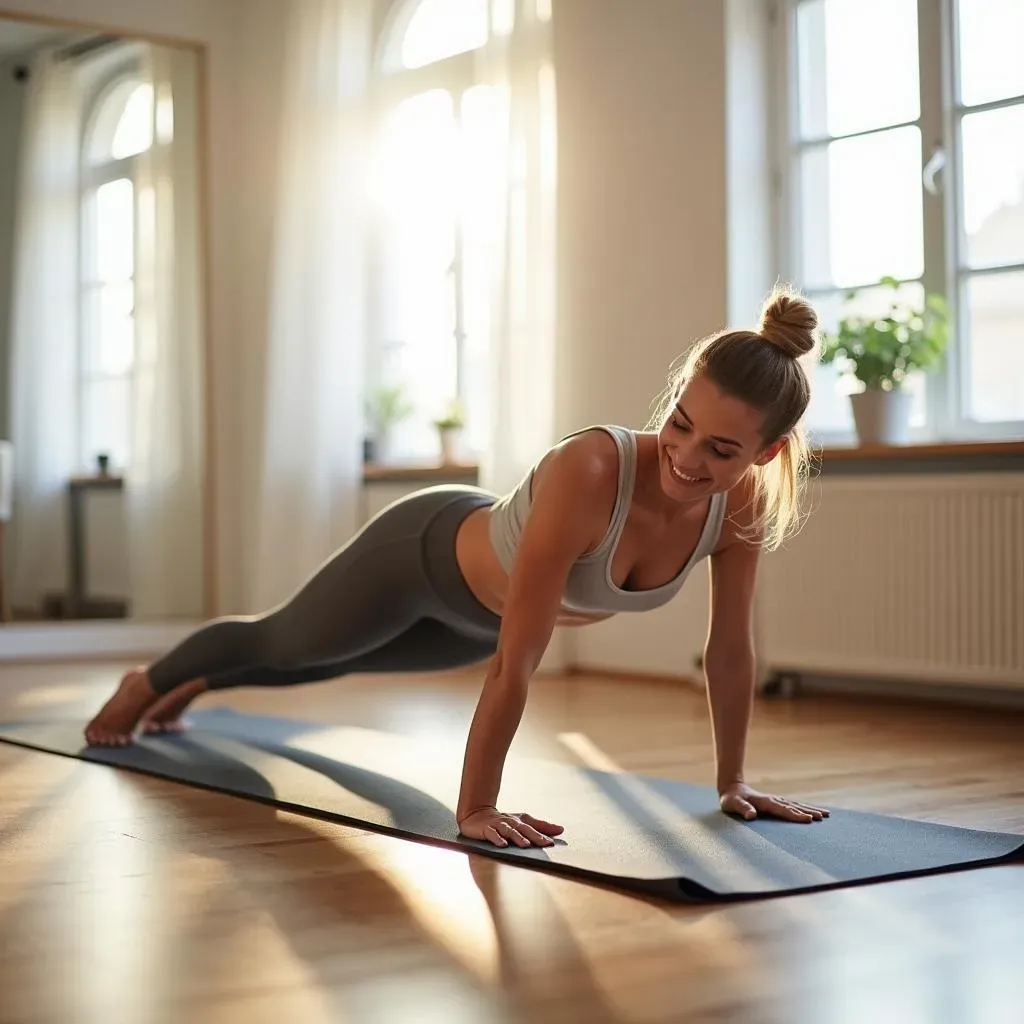
Refining Your At Home Pilates Workout: Tips for Better Form and Results
Focus on the Details, Not Just the Movement
so you've started doing your at home pilates workout, which is awesome. But are you just going through the motions, or are you really *doing* Pilates? The difference often lies in the details. It's easy to rush through reps, especially when you're on your own, but that's where you miss the magic. Think about engaging your core *before* you even start moving. Pull your belly button towards your spine, like you're bracing for a gentle punch. Keep your shoulders relaxed, away from your ears. Are your hips level during leg lifts? Is your spine long, not crunched?
Pilates is about quality over quantity. Doing five perfect reps of an exercise is way more effective than doing twenty sloppy ones. It takes concentration, which can be tough when the dog is barking or the laundry is calling. But dedicating those minutes to really feeling the muscles work makes a massive difference in your results and prevents potential injuries. It's like building a house; you need a solid foundation laid with precision, not just throwing bricks around.
Listen to Your Body and Stay Consistent
Another crucial part of refining your at home pilates workout is learning to truly listen to what your body is telling you. If something feels sharp or painful, stop. There's a difference between muscle fatigue and joint pain. Pilates should challenge you, yes, but it shouldn't hurt. Maybe you need a modification for an exercise, or perhaps you just need to lighten up on the range of motion that day. It's your workout, in your space; you get to call the shots based on how you feel.
Consistency beats intensity every single time. Doing a 20-minute at home pilates workout three times a week is far more beneficial than doing one epic hour-long session and then taking two weeks off. Find a rhythm that works for your schedule, even if it's just short sessions. Those consistent efforts add up, building strength and flexibility gradually. Don't expect miracles overnight, but stick with it, and you'll start noticing changes – maybe you stand a little taller, or that nagging back ache starts to ease up.
Quick Checks for Better Form:
- Is your core engaged throughout the movement?
- Are your shoulders relaxed and down?
- Is your neck long, not strained?
- Are your movements controlled, not jerky?
- Are you breathing deeply and intentionally?
Beyond the Basics: Progressing Your At Home Pilates Workout Routine
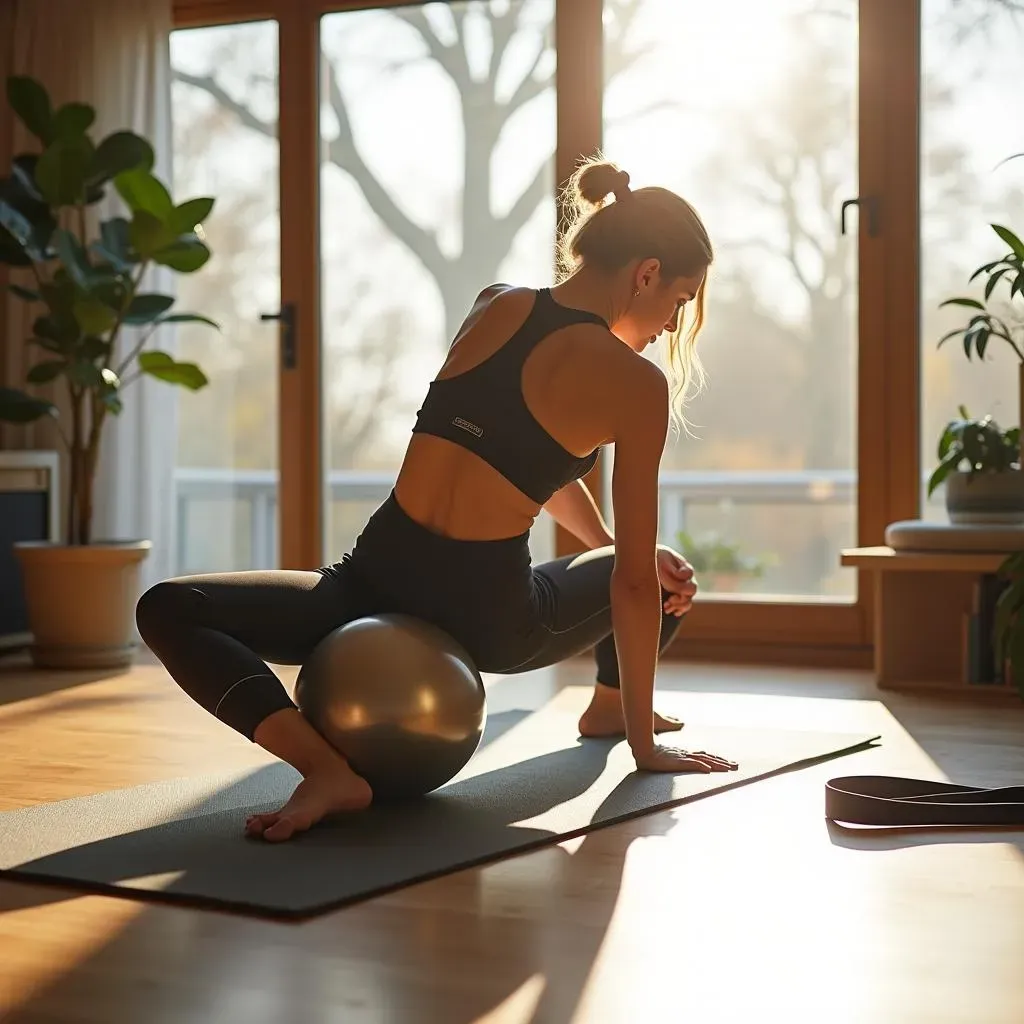
Beyond the Basics: Progressing Your At Home Pilates Workout Routine
Knowing When You're Ready to Level Up
So, you've been crushing your basic at home pilates workout. You can hold a plank without your hips sagging like a sad balloon, your Hundred feels less like drowning and more like controlled breathing, and you're not wobbling precariously during your side leg series. Congrats, you've built a solid foundation. But if the exercises start feeling a little too easy, like you're just going through the motions without much challenge, that's your body telling you it's ready for more. Progressing your at home pilates workout isn't about doing a million reps; it's about increasing the complexity and control required. It's about maintaining that precision and core engagement even when the move gets harder. Don't rush it, but don't stay stagnant either. Pilates is a journey, not a quick sprint to nowhere.
Adding Challenge: Props and Variations
Once the basic exercises feel comfortable and you can maintain form throughout, it's time to spice up your at home pilates workout. You don't need a full reformer setup (though that would be nice, wouldn't it?). Simple, inexpensive props can make a huge difference. A resistance band adds challenge to leg and arm work. A small Pilates ball can be placed between your knees or ankles to increase inner thigh engagement or behind your back for support during abdominal exercises, turning a standard crunch into something far more potent. Even light hand weights (think 1-3 pounds, seriously, don't go heavy) can add intensity to arm circles or chest work. Beyond props, look for variations of the exercises you already know. Maybe elevate your feet during bridges, extend your legs further during roll-downs, or try single-leg versions of moves you do on two legs.
Here are a few simple ways to increase the challenge:
- Use a resistance band for leg or arm exercises.
- Place a small Pilates ball between knees or ankles.
- Incorporate light hand weights (1-3 lbs) for upper body work.
- Try single-leg variations of exercises like bridges or stretches.
- Increase the range of motion where appropriate and controlled.
- Slow down the movement even further to focus on muscle tension.
Consistency and Listening as You Progress
As you start adding layers to your at home pilates workout, the core principles become even more critical. Control and precision are paramount when movements get harder. Don't sacrifice form for the sake of doing a more advanced version. If adding a prop or trying a variation makes you lose your core connection or causes strain, dial it back. It's not a competition. Listen carefully to your body; pushing too hard too soon is the fastest way to end up on the injured list, and nobody wants that. Remember consistency is your superpower. Regular, even slightly shorter, sessions where you focus on quality movement will yield better results than sporadic, overly ambitious workouts. Keep showing up on your mat, pay attention to how your body responds, and slowly build your strength and repertoire. Your at home pilates workout should evolve with you.
Making At Home Pilates Work for You
So, there you have it. An at home pilates workout isn't some unattainable fitness fantasy; it's a practical, effective way to build core strength, improve your posture, and boost flexibility on your own terms. You don't need a fancy studio or a room full of gear. Just a little space, a willingness to focus, and consistency. It might feel challenging at first, maybe even a bit awkward, but sticking with it tends to yield noticeable changes. Give it a shot and see how it fits into your routine.
